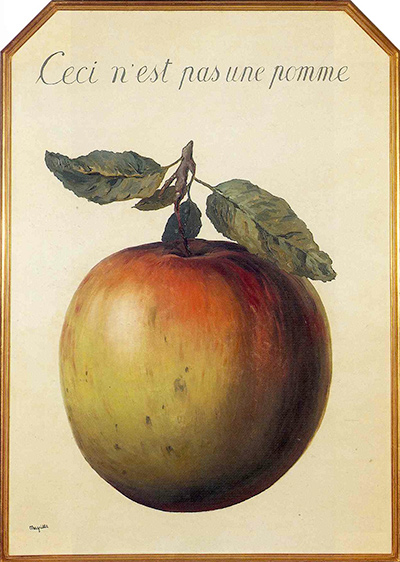This painting, originally entitled, and captioned, 'Ceci n'est pas une pomme', was painted in 1964, just three years before the artist's death.
It is painted in oil on unilite, and measures 141.7cm by 100.8cm. The work was auctioned in London by Christies in February 2013 as part of their 'The Art of the Surreal' sale, and was sold for almost two million pounds - close to twice the upper estimate.
Rene Magritte had a great interest in the illusory nature of art, and this painting was neither the first nor the last time he added a caption stating that the subject of the painting was not what it appeared to be. The device was first used in 1929's The Treachery of Images, where an image of a pipe was captioned 'Ceci n'est pas une pipe', French for 'This is not a pipe'.
Magritte himself argued that the caption was accurate, because the image was merely a picture of a pipe. It was not possible to stuff it with tobacco, so to call it a pipe would have been a lie.
The artist would return to the theme over thirty years later with this painting, entitled This is Not an Apple, with the caption in French having the same meaning. Of this later work, Magritte said that no matter how tempting or illusionary a manner the apple is painted in, it remains nothing more than paint on a background. He went on to add that the word apple itself is no more than an arbitrary description - neither the word nor the picture can be considered to be the actual apple.
Apples were a recurring motif throughout Magritte's career, and other works prominently featuring the fruit include 1966's Le Jeu de Morre (The Game of Mora), 1952's La Chambre d'Ecoute (The Listening Room) and 1964's Le Fils de l'Homme (The Son of Man). The first of these is reputed to have inspired the name and logo of the Beatle's Apple Records, while the second was used by the Jeff Beck Band as an album cover.




